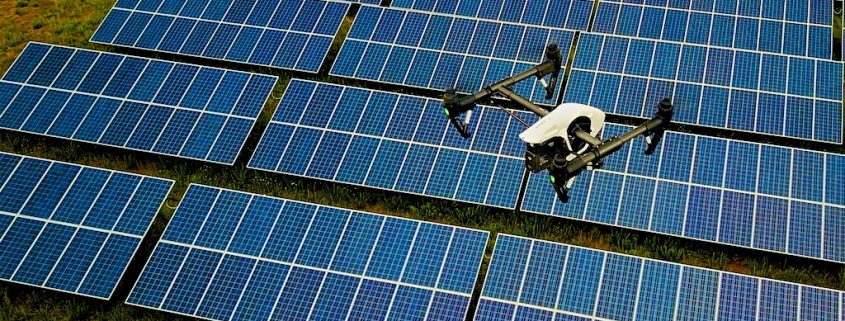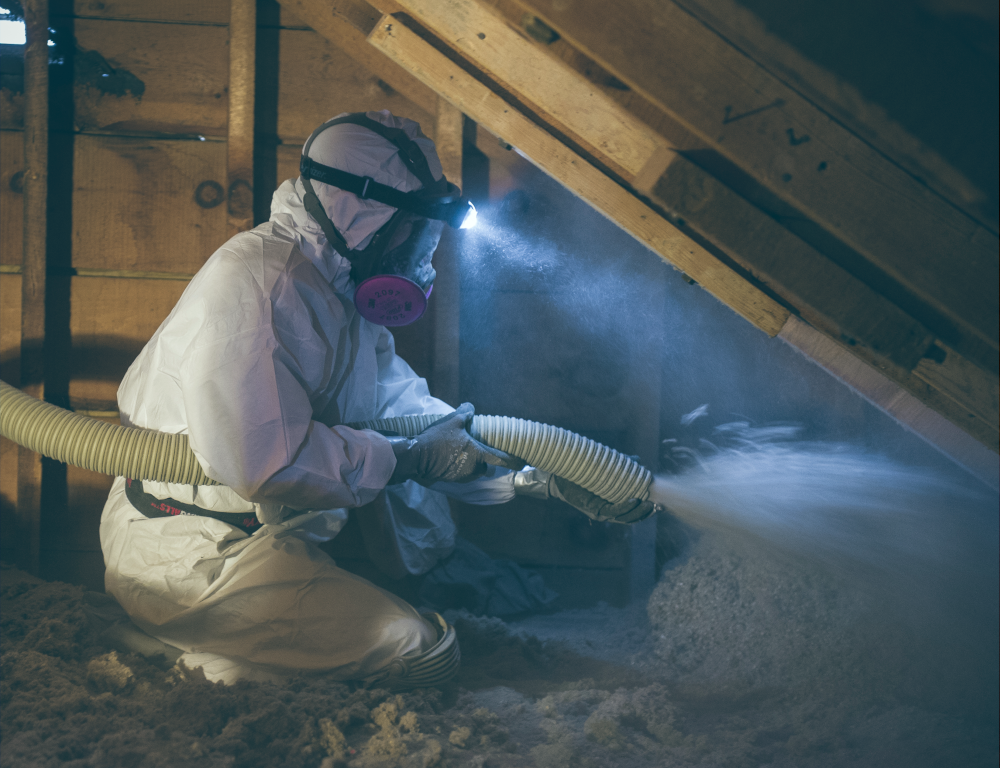Want top dollar? Showcase efficiency via energy testing north carolina
Want top dollar? Showcase efficiency via energy testing north carolina
Blog Article
Exactly How Energy Screening Can Bring About Much More Lasting Living Solutions
Power testing is a crucial tool for promoting sustainable living. It uncovers inadequacies in power usage within homes. Methods such as energy audits and thermal imaging offer useful insights. Property owners can determine areas requiring enhancement, from insulation to appliances. Attending to these inefficiencies can result in significant power financial savings. Yet, numerous remain unaware of the complete possibility of these techniques. What actions can people take to boost their homes and add to a much more lasting future?
Understanding Power Screening and Its Significance

Common Techniques of Energy Screening
There are a number of common methods of energy screening that home owners can utilize to assess their energy efficiency (energy testing taylors sc). One widely made use of method is the blower door examination, which gauges the air leak in a home. By pressurizing the structure, it determines breezy areas that might require sealing. An additional technique is thermal imaging, where infrared cameras detect temperature level variants in windows, ceilings, and wall surfaces, highlighting insulation issues.Energy audits are also preferred, involving a detailed evaluation of a home's energy usage, commonly performed by a specialist. These audits might consist of reviewing home heating and cooling down systems, appliances, and general energy usage patterns. Additionally, clever power meters can provide real-time data on energy usage, assisting house owners comprehend their intake habits. Together, these methods offer important understandings, allowing house owners to make educated choices about improving their energy performance and promoting sustainable living practices
Identifying Energy Inefficiencies in your house
Identifying energy inefficiencies in a home is crucial for house owners intending to lower energy usage and reduced energy bills. Typical areas to analyze consist of insulation, windows, and home appliances. Poor insulation can cause considerable warmth loss in winter season and undesirable heat gain in summer season, making heating & cooling systems work harder. Drafty home windows contribute similarly, permitting conditioned air to leave and increasing power demand.Additionally, out-of-date devices frequently take in more energy than their contemporary equivalents, additionally exacerbating inadequacy. Home owners need to likewise take into consideration the lighting system, as incandescent light bulbs make use of even more power compared to LED options.Regular upkeep of heating and cooling systems is vital, as overlook can result in lowered efficiency. By systematically reviewing these facets of a home, homeowners can identify areas needing renovation. Addressing these inefficiencies not just improves comfort but also contributes to a much more lasting way of life by lessening energy waste.
The Function of Power Audits in Sustainability
Power audits play a crucial duty in advertising sustainability by supplying homeowners with a considerable assessment of their power use. These evaluations identify locations where energy is squandered, allowing individuals to recognize their intake patterns and make notified decisions for renovation. By revealing ineffectiveness in home heating, cooling, insulation, and appliances, power audits act as an essential tool for decreasing total power demand.Furthermore, they facilitate the application of energy-saving measures, such as updating insulation or installing energy-efficient lighting, which can substantially lower utility costs and decrease carbon footprints. The insights obtained from a power audit encourage property owners to prioritize sustainability in their living atmospheres. As more families take part in this process, the cumulative impact adds to more comprehensive environmental objectives, cultivating a society of energy consciousness and responsibility. Ultimately, power audits are foundational to advancing sustainable living options, benefitting both individual home owners and the environment at big.
Ingenious Technologies for Energy Effectiveness
As house owners increasingly seek to improve their power efficiency, cutting-edge modern technologies are arising to support these ventures. Smart home systems, outfitted with sensors and automation, enable homeowners to keep track of and regulate power usage in real-time. These systems can change illumination, heating, and cooling based on tenancy, thereby lowering waste.In enhancement, advancements in energy-efficient home appliances have made considerable strides. Gadgets such as power STAR-rated fridges and cleaning makers eat much less energy while giving suitable performance. Furthermore, the integration of renewable resource sources, like photovoltaic panels and wind turbines, allows homeowners to produce their very own power, decreasing dependence on nonrenewable resources.Building products have actually additionally evolved, with options like insulated energy-efficient windows and concrete forms adding to lowered energy loss. With each other, these ingenious technologies not just improve power efficiency but additionally promote an even more sustainable living atmosphere, encouraging property owners to make impactful choices in their energy usage techniques.
Long-Term Advantages of Sustainable Living
While lots of might view sustainable living as a trend, its lasting benefits expand much beyond simple way of living options. Embracing lasting practices causes significant decreases in carbon impacts, adding to a much healthier planet. By minimizing resource consumption and prioritizing sustainable energy, neighborhoods and individuals can experience lower utility prices. This economic alleviation can enhance economic security with time, allowing for reinvestment in other important areas.Furthermore, lasting living fosters stronger area ties as individuals collaborate on local campaigns, advertising social communication. Health benefits additionally arise, as reduced contamination and boosted eco-friendly rooms improve air high quality and overall health. Additionally, future generations will acquire a much more lasting atmosphere, ensuring the availability of all-natural resources and biodiversity. Eventually, the lasting benefits of sustainable living incorporate ecological, financial, and social measurements, providing an engaging case for individuals to embrace and maintain these methods for the better good.
Steps to Carry Out Energy-Saving Solutions
Carrying out energy-saving solutions begins with a complete assessment of energy usage patterns to determine locations for enhancement. As soon as these patterns are recognized, people can determine energy-efficient upgrades that align with their requirements. Constant tracking and changes to energy usage assurance that these options stay reliable over time.
Assess Energy Consumption Patterns

Reviewing power usage patterns over here is a crucial action why not try here towards identifying reliable energy-saving options. By methodically tracking use across different times and companies, devices and individuals can identify areas of too much consumption. This analysis can reveal peak usage periods, enabling a much better understanding of when power demands are highest. Additionally, taking a look at patterns permits for comparisons between similar home appliances, highlighting those that operate much less efficiently. Information collection approaches, such as clever meters and energy audits, supply beneficial understandings right into total energy use. Furthermore, determining trends in time can help in identifying seasonal variations and shifts in consumption behaviors. This fundamental expertise is essential for creating targeted strategies that advertise sustainable living and minimize general power expense.
Recognize Energy-Efficient Upgrades
To effectively execute energy-saving remedies, identifying energy-efficient upgrades is essential for both homeowners and organizations. This procedure starts with a detailed analysis of existing systems, including heating and cooling devices, insulation, and appliances. Upgrades may encompass installing ENERGY STAR-rated appliances, boosting insulation, and using energy-efficient home windows. Furthermore, executing smart thermostats can maximize heating and cooling schedules, lowering energy usage. Shifting to LED illumination is an additional efficient action, as it consumes substantially much less energy than traditional bulbs. In addition, exploring renewable resource options, such as photovoltaic panels, can supply long-term cost savings. Ultimately, prioritizing these upgrades not only contributes to lowered power costs yet also promotes a commitment to sustainability, benefiting both the atmosphere and future generations.
Screen and Change Usage
Monitoring and adjusting power use is important for optimizing the benefits of energy-saving services. Consistently evaluating power intake patterns enables people and organizations to recognize locations for improvement. By utilizing wise meters and power monitoring systems, customers can track real-time use and identify any anomalies that may indicate inefficiencies.Adjusting behavior, such as shutting off lights and unplugging unused gadgets, additionally enhances power financial savings. Furthermore, scheduling appliances to run during off-peak hours can substantially navigate to this website lower costs.Conducting routine energy audits assurances that carried out options continue to be reliable gradually. By actively taking part in surveillance and adjusting techniques, individuals can optimize their energy effectiveness, add to sustainability initiatives, and eventually minimize their ecological impact.
Regularly Asked Concerns
Just how much Does an Energy Audit Commonly Expense?

Can Power Screening Assist Reduce Energy Expenses?
Power screening can significantly lower energy costs by identifying inefficiencies in a home's energy use. By resolving these concerns, homeowners commonly experience reduced intake and prices, leading to more economical energy monitoring and improved financial cost savings.
What Credentials Should a Power Auditor Have?
An energy auditor need to possess pertinent qualifications, such as RESNET or BPI, along with experience in building sciences. energy testing south carolina. Strong analytical abilities and expertise of power effectiveness methods are necessary for carrying out exact evaluations and offering reliable suggestions
Are There Government Motivations for Energy Performance Upgrades?
Government incentives for power efficiency upgrades often exist, consisting of tax obligation gives, credit histories, and rebates. These programs intend to urge organizations and house owners to buy energy-saving innovations, eventually advertising environmental sustainability and reducing total energy intake.
How Usually Should I Conduct Power Testing in My Home?
Power screening ought to ideally be performed yearly to determine inefficiencies. Nevertheless, home owners may consider a lot more constant evaluations after significant restorations, adjustments in power bills, or if unusual drafts or temperature variants are observed within the home. Energy testing enables the analysis of just how well a home uses power, identifying areas where waste happens. Determining energy inefficiencies in a home is necessary for homeowners aiming to lower power consumption and lower utility bills. Power audits play an essential function in promoting sustainability by offering property owners with a comprehensive assessment of their energy use. By exposing inefficiencies in home heating, air conditioning, insulation, and home appliances, energy audits offer as a critical tool for decreasing general power demand.Furthermore, they promote the application of energy-saving steps, such as updating insulation or mounting energy-efficient lights, which can considerably decrease energy bills and reduce carbon impacts. Power screening can markedly lower energy costs by determining inefficiencies in a home's power use.
Report this page